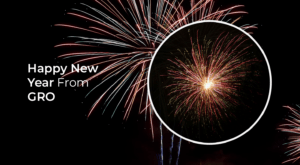Colour Theory the understanding of colour. How we perceive colour and the visual effects of how colours mix, match or contrast. Colour theory also involves what certain colours may connotate and the methods used to replicate a colour. Today we’re going to talk about how different colours can connotate different feelings and meanings.
The Basics
Colours are organised on a colour wheel (many of you will have been introduced to a colour wheel in your early school days) the colour wheel is grouped into 3 different categories:
- Primary Colours – Red, Yellow and Blue
- Secondary Colours – Green, Orange and Purple
- Tertiary Colours – Can include, Blue/Green or Red/Violet
When working with a colour wheel, opposite colours on the wheel are complimentary to one and other, meaning those colours will pair well together and have a great contrast, for example, the colours red and green complement each other and become more vibrant when placed together. Artists, designers, and marketers just like us here at GRO, have been using colour theory for assistance within our work for years.
You can separate the colour wheel into warm colours and cool colours, each side having their own connotations. The warm colours are generally associated with energy, brightness, and action whereas the cooler colours are associated with calm, peace, and serenity. When you can recognise these connotations, you can understand how choosing a colour for a logo for example, can affect the messaging of your brand.
So, why should you care about colour theory?
BRANDING, MARKETING AND SALES!
Understanding colour theory can help you make effective decisions when it comes down to branding. Ask yourself, what colour should the logo be? What feelings will this colour bring to your audience? What would you like your brand message to connotate? By asking yourself these questions you can make decisions about colour based on your answers.
Here is a list of colours and what they can connotate:
- Red – Excitement, energy, passion, love, desire, strength, power, heat, aggression, danger, fire, blood, violence, and intensity.
- Yellow – Joy, happiness, optimism, summer, gold, hazard, friendship, and hope.
- Blue – Peace, tranquillity, cold, calm, stability, harmony, trust, truth, cleanliness, sky, water, security.
- Green – Nature, environment, good luck, youth, fertility, jealousy, envy, and service.
- Orange – Energy, balance, warmth, cheerful, confidence, demanding of attention and expansive.
- Purple – Luxury, royalty, spirituality, honour, mysterious, arrogance, wisdom, and enlightenment.
- Pink – Love, romance, caring, tenderness, acceptance and calm.
So, how have certain brands used these connotations within their brand messaging?
Take Cadbury’s for example, the main colour in their branding is purple. They want people to know that their chocolate is luxurious, royal and the best you’ll get. All things in which the colour purple connotates. This gives people a sense of security and trust in the brand through the use of the colour, as they believe they are consuming the best brand of chocolate.
The police service and other public sectors such as the NHS use the colour blue. Why is this? The colour blue connotes trust, health, cleanliness, and security, which are the things we expect from our public services.
Children’s TV Channel Nickelodeon, use the colour orange and this is the main colour within their brand logo. The colour orange represents cheerfulness, friendliness, and warmth, all of which is appealing to young children. Therefore, their brand colours are fitting with their target audience.
Lots other brands use colour theory to their advantage when wanting to express specific messaging and connect with their target audiences. Colour theory is constantly overseen in everyday life and once you have an understanding of how it works, the chances are, you’ll find it hard not to notice.



